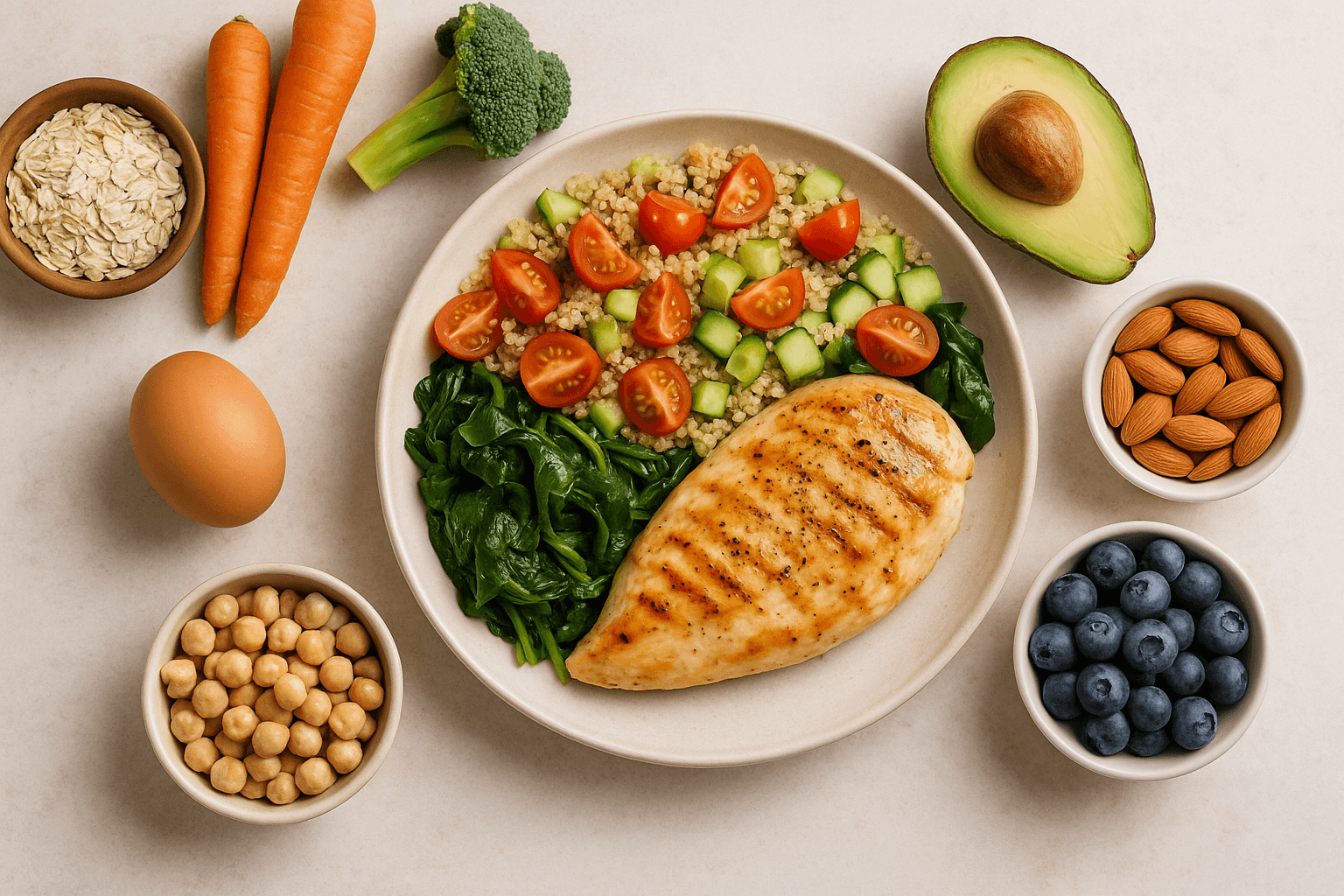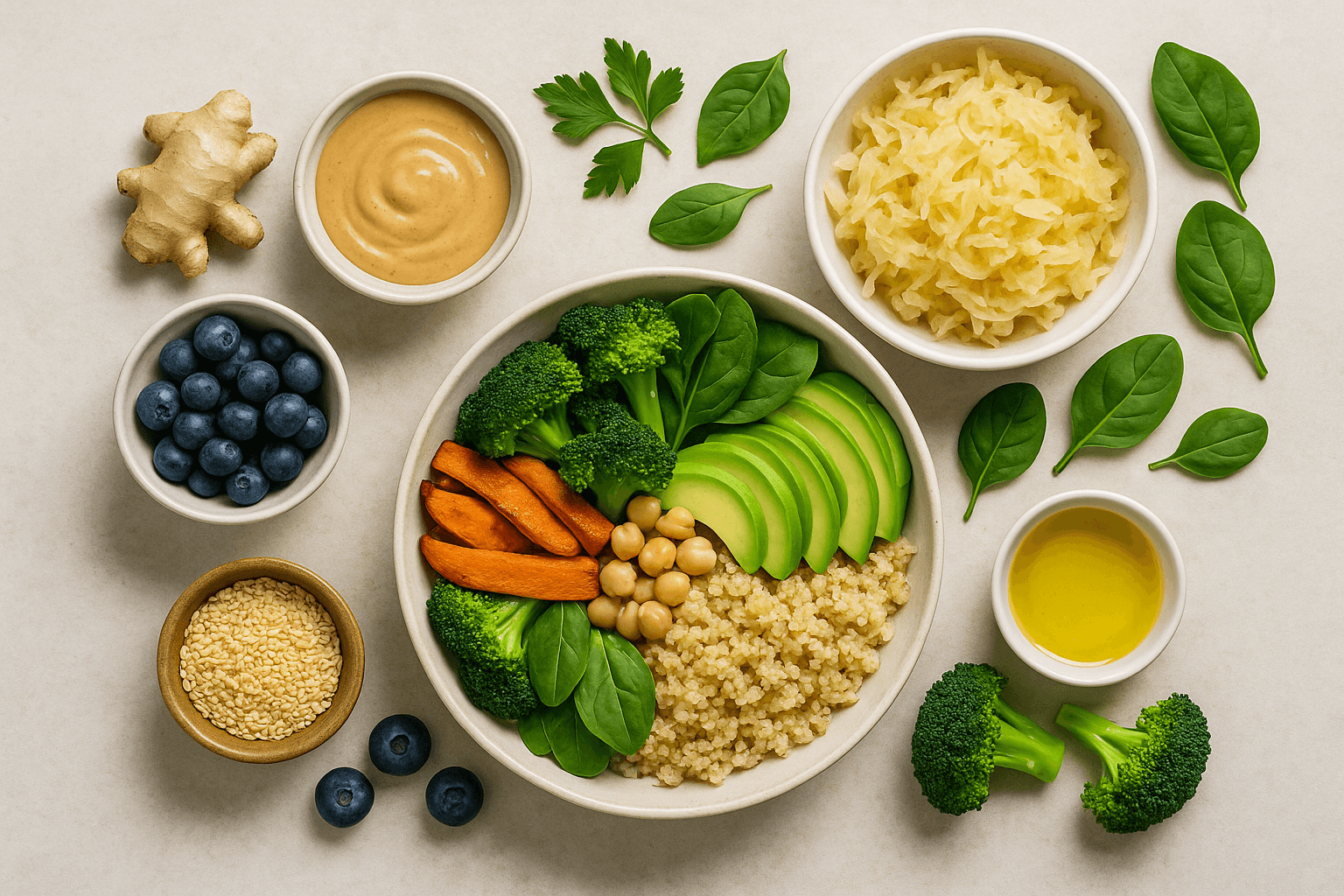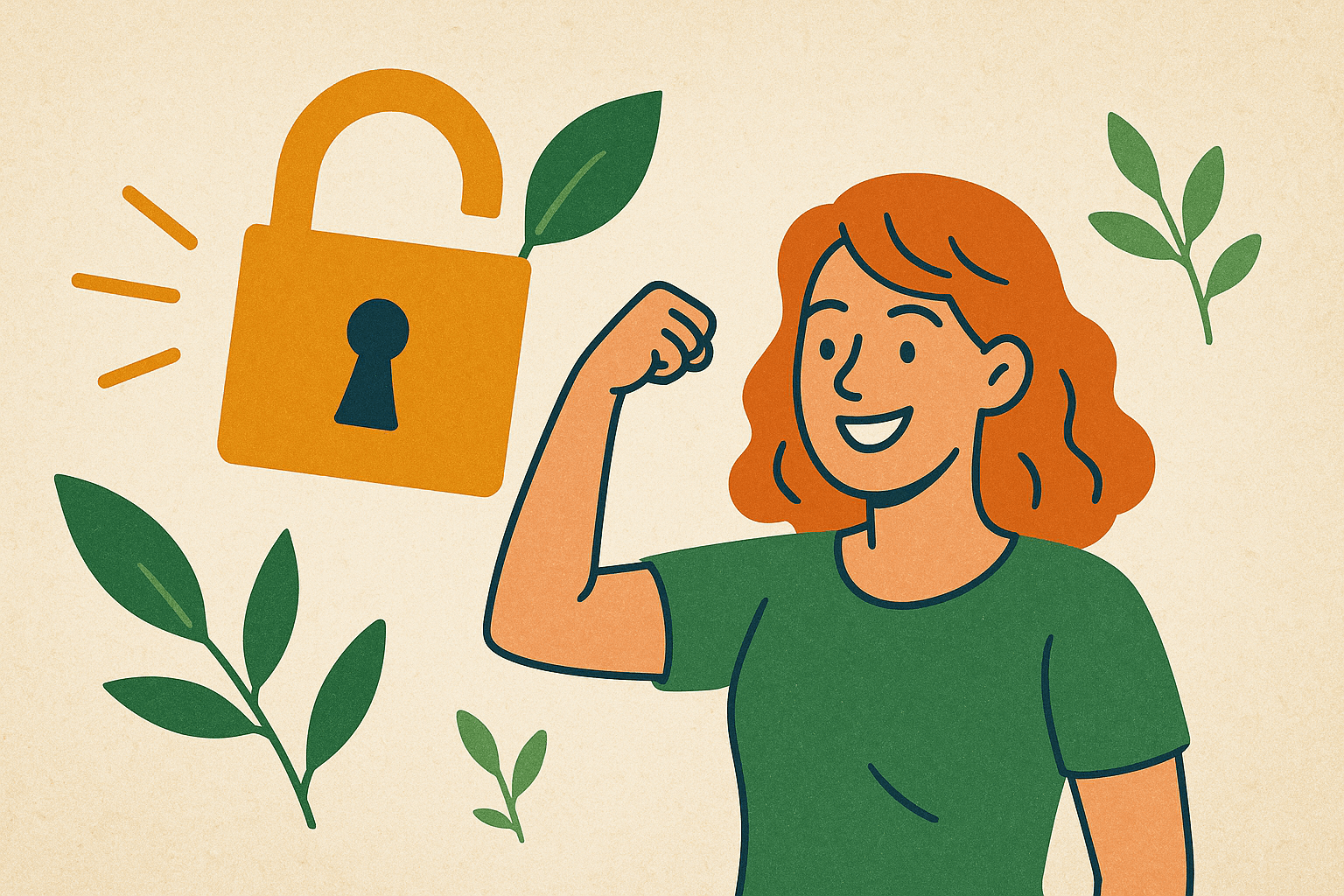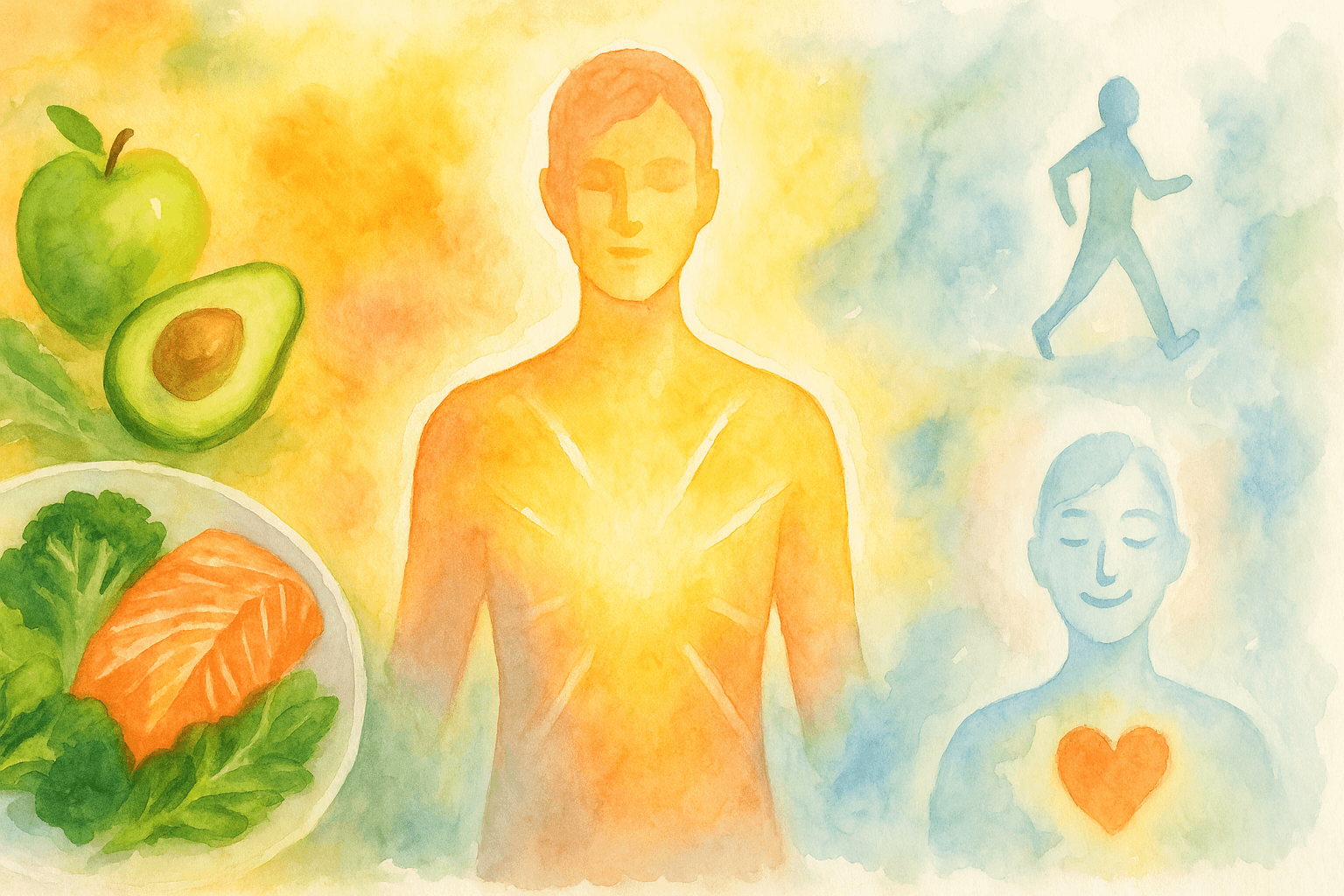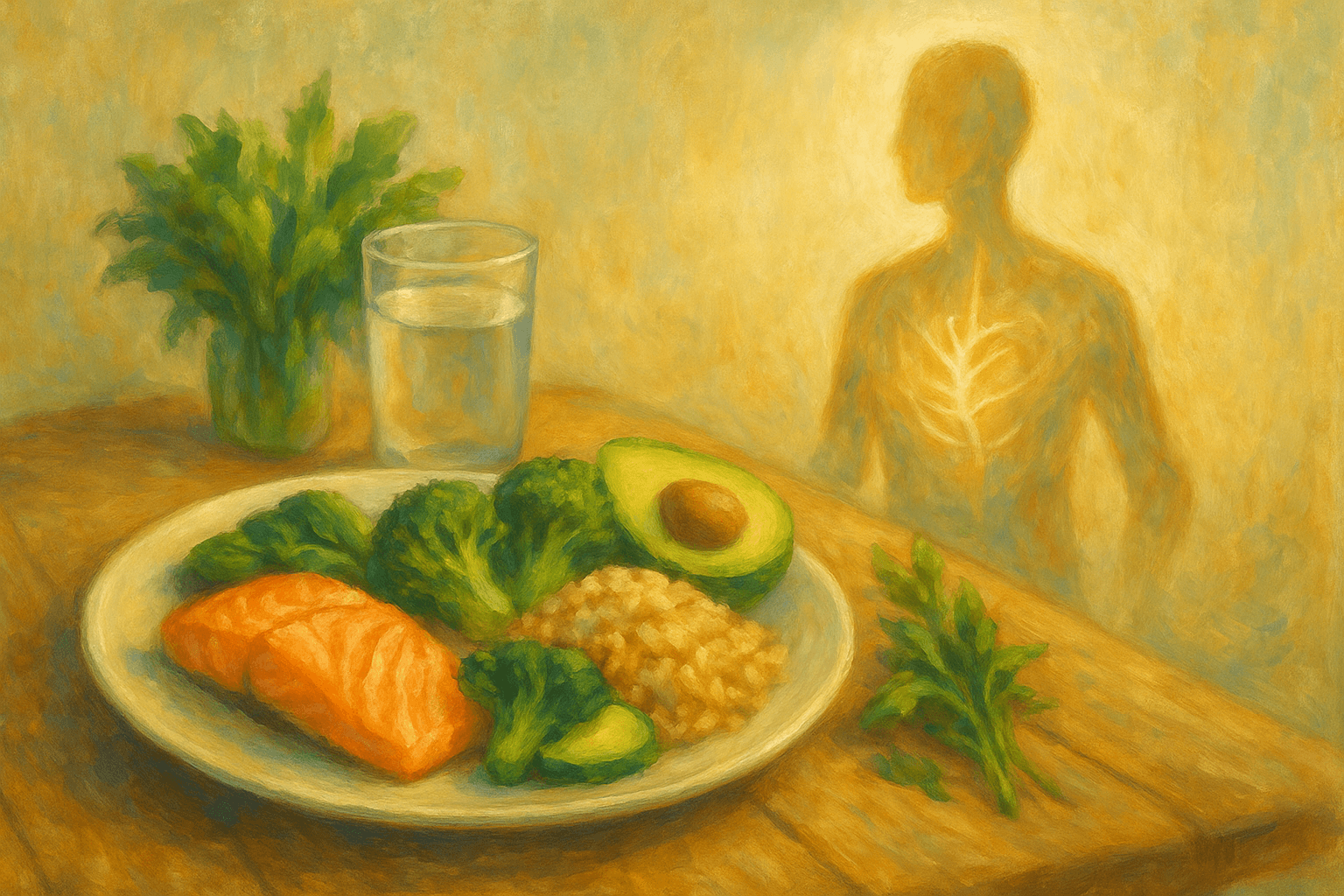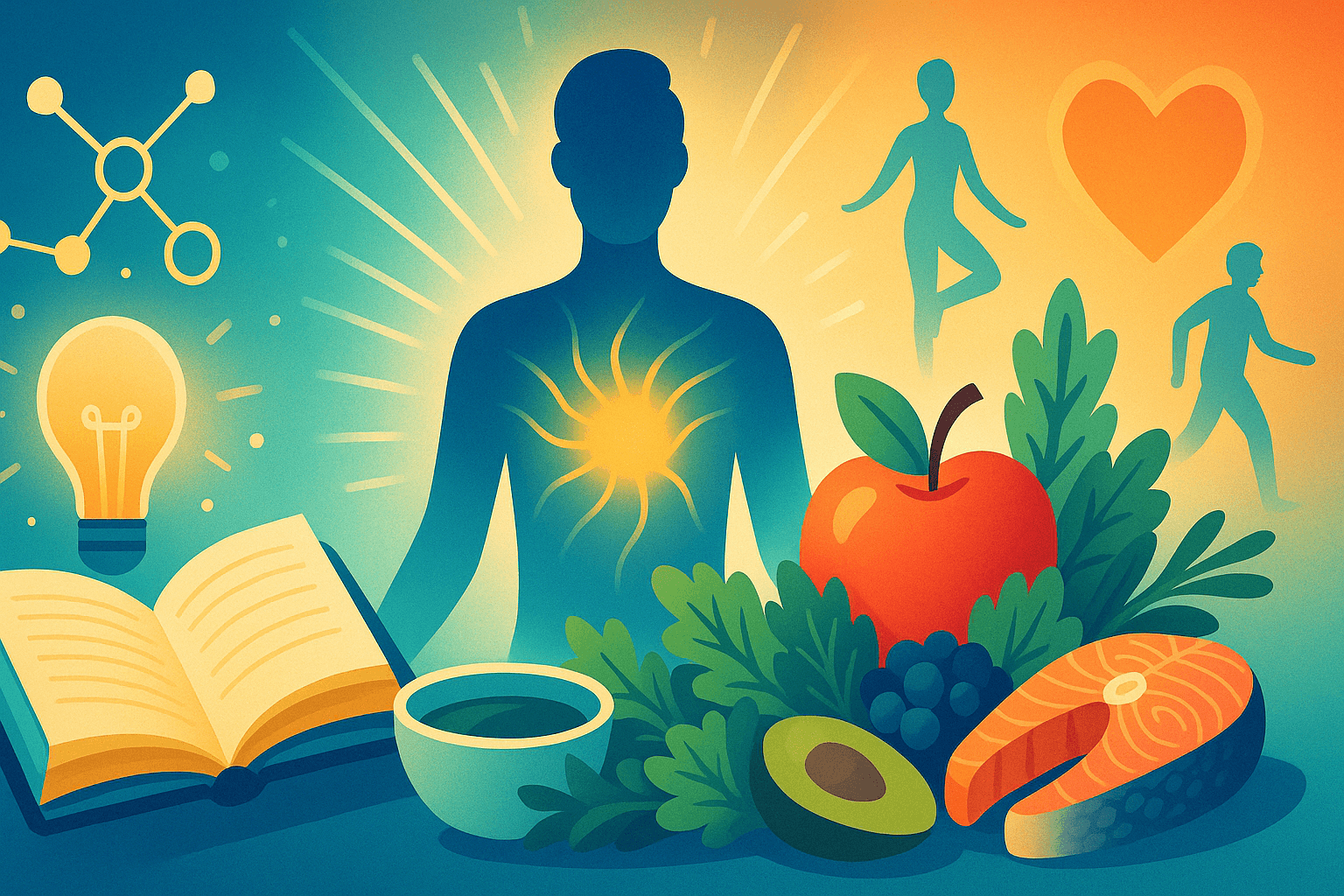Diabetes Demystified: From Fear to Freedom—A Realistic, Science-Backed Guide to Living and Thriving
Published on July 22, 2025
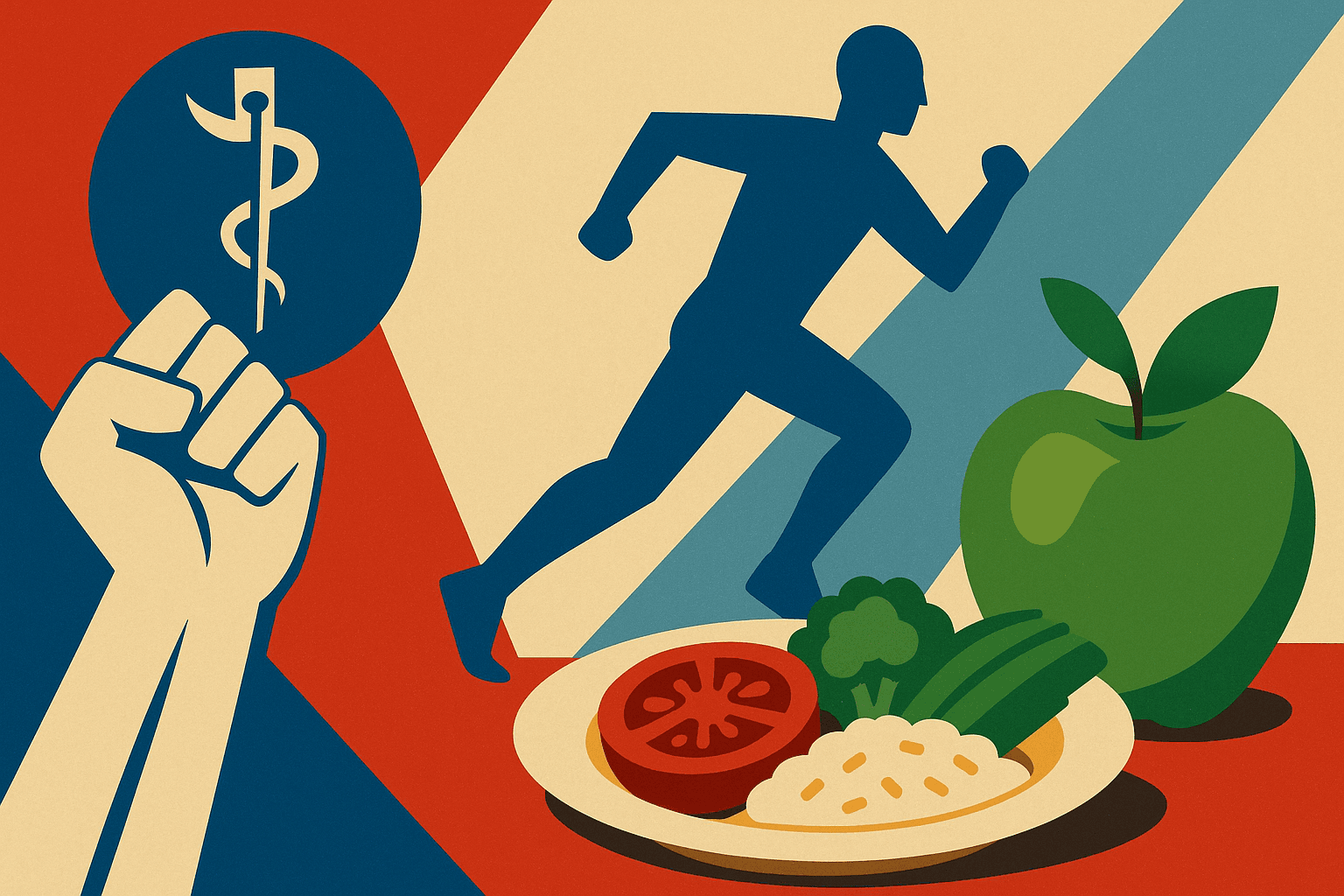
If you – or someone you care about – has been diagnosed with diabetes – then you probably remember the confusion, the fear, the doubt, and the overwhelming sense of loss that is commonly (and sadly) experienced. And suddenly everything has to be different in your entire life. These are questions: “Will I need to abandon my favorite foods? Will every meal be a battle? Can I still indulge an impromptu dinner out, a piece of birthday cake or even an exercise-filled getaway?” These are not only medical questions — they’re questions about who you are, what your future looks like, your joy in daily life. As a dietitian who’s walked alongside clients and close family members on this path for years, I can tell you a diabetes diagnosis does not signal the end of enjoyment, energy, or eating altogether delicious food. Indeed, it can be a potent invitation to live with more awareness, more intention and more self-care than ever before.
And we need to sweep away some of the myths so … We need to clear out some of the myths, get real about what diabetes is (and what it isn’t), and equip you with practical, proven tools so you can live your healthiest, happiest life—no matter where you begin or what your history may be.
What Is Diabetes, Really?
Diabetes is not one-size-fits-all. Diabetes is fundamentally a problem with the way your body regulates blood sugar (glucose). Your primary source of energy is glucose (blood sugar), which comes mainly from the carbohydrates in the food you eat. But to access that energy, your body requires insulin — a hormone produced by the pancreas. Insulin acts like a key, unlocking the doors of your cells to allow sugar to enter them and provide a source of fuel.
That’s in contrast to Type 1 Diabetes, which tends to develop during childhood or adolescence, but can occur at any age, when the body’s own immune system attacks and destroys the insulin-producing cells in the pancreas. Those with Type 1 need insulin every day, typically from injection or a pump, to stay alive.
The most common is Type 2 Diabetes, which is commonly diagnosed in adulthood, although it’s now being found in children and adolescents more and more frequently. In Type 2, the body is resistant to insulin or does not make enough of it. Genetics, weight, physical inactivity, getting older and even chronic stress can play a part — but it’s not all about body size. So do many people with Type 2; many with higher weights never get diabetes.
Gestational Diabetes occurs in pregnancy, increasing health risks for mother and child, but often disappears after birth. There are also rare types that are related to genetics or medications, but the majority of people have Type 1 or Type 2.
Why does diabetes matter? If blood sugar stays high too long, it can slowly — and without symptoms — damage blood vessels, nerves, eyes, kidneys and the heart. But here’s the inspiring truth: most complications can be prevented with careful management and self-care, and there’s no reason you cannot continue to live a full, active and happy life.
The Biggest Diabetes Myths — And the Truth
Myth 1: Only fat people develop diabetes.
That much is a stereotype, but the reality is a lot more nuanced. Genetics, race and ethnicity, age, particular medical conditions, stress, medications and even how well you sleep are all factors at play. Many people who have Type 2 diabetes are at a healthy weight, and anyone, including people who work hard to manage their fitness and diet, can acquire Type 1. Diabetes doesn’t discriminate.
Myth 2: If you eat sugar, you will get diabetes.
The same way that a diet high in sugar can contribute to weight gain and insulin resistance, but diabetes itself is about how your body uses insulin — not about the handful of cupcakes. Playing the total carbohydrate intake game, balancing meals and considering portion sizes is more important than swearing off sweets forever. In reality, many people with diabetes can have some of their favorite treats in moderation, such as part of a meal that balances everything out.
Myth 3: Having diabetes equals saying goodbye to your favorite foods for good.
Absolutely not! The essence of good diabetes care is flexibility, knowledge and a small degree of planning — not rigid deprivation. With some careful decisions about portions, timing and what foods to combine, almost anything becomes manageable in your life. The trick is not to have to think much about it, to create habits that keep your blood sugar steady and make eating neither a source of guilt nor of stress.
Blood Sugar Basics: Get to The Heart of Diabetes Management
You’re not aiming for “perfect” blood sugar at every moment of every day with diabetes — you’re going for a slab of healthy, a consistent range that will protect your body, sustain your energy levels, and enable you to feel your best. That means understanding how food, exercise, stress, sickness and even sleep affects your glucose numbers.
That might be a good place to start: regular blood sugar monitoring. No matter if you rely on a old-school finger-prick meter or a high-tech continuous glucose monitor (CGM), the data that you can get from your devices is a game changer. You will also begin to notice trends: which foods or activities spike your numbers and which keep it steady, or bring it back down. If your readings sometimes appear high or low, don’t panic or feel guilty. Concentrate instead on long‑term trends and gradual progress.
The Power of Food: Eating Well with Diabetes
Food is not your enemy—in fact, it’s one of your most powerful tools for health, joy, and energy. Creating meals that are challenging to your diabetes isn’t about denying yourself: It’s about getting to know what different foods do to your body, and experimenting with puts together meals that buoy and delight you.
Carbohydrates: Not All Are Equal
Only a carb’s carbohydrate content drives changes in blood sugar, however, and not all carbs are created equal. Foods such as whole grains, beans, lentils, vegetables and fruit are full of fiber and nutrients. These do not get digested as quickly, so that you have a more gradual increase in blood sugar rather than having a sugar spike. Processed carbs like white bread, pastries and sugary drinks are rapidly digested and cause blood-sugar levels to skyrocket and then plunge.
Try to stagger your carbs throughout the day, and “pair such carbs with protein and healthy fats, to slow down absorption,” the nutritionist said. Not only does it prevent a roller-coaster ride of blood sugar highs and lows, but it also makes your stomach feel fuller and more satisfied. Keep in mind: everyone’s carb tolerance is different, so give yourself time to figure out what does and doesn’t work for your body.
Protein: The Unsung Hero
It's your friend if you want to feel full and provide your body with long-burning energy. It slows digestion, can help prevent a post-meal glucose spike and preserves muscle. Beans, nuts and seeds instead of meat, poultry, fish, and eggs. The importance of including protein at every meal is one the easiest and most effective ways to feel better and prevent blood sugar will that I can recommend.
Healthy Fats Are a Friend in Moderation
And foods laden with healthy fats like avocado, nuts or seeds, olive oil and fatty fish promote heart health and help you feel full. Fat, while not directly raising blood sugar, can be calorie-dense, so, moderate eating, if you please. Consider substituting saturated fats (butters, fatty meats) for more plant-based fats. Fried and trans fats should be a treat, if eaten at all.
Portion Control and Meal Timing
Portion size matters — a handful of nuts are a healthy snack but a whole bag can pile up to an additional few-thousand calories. Use your hand as a guide: your palm for protein, your fist for starchy vegetables or grains, the size of your thumb for fats, and your cupped hand for produce. You shouldn’t skip meals, because that can cause blood sugar swings that will make you more likely to overeat later. A steady, moderate diet helps to maintain both your energy and your blood sugar at an even keel.
Hydration
Don’t overlook fluids! Water is best. Aim for 6–8 glasses a day. Reduce sugary drinks and fruit juice. If you prefer a bit of flavor, add a splash of citrus, some berries or cucumber slices to your water.
Physical Activity: The Magic Pill for Diabetes
Exercise is one of the strongest weapons you can have against diabetes. When you are moving, your muscles are using glucose for fuel and — voilà! — blood sugar decreases naturally. It increases insulin sensitivity, so your body requires less insulin after you eat in order to do its job.
Strive for at least 150 minutes a week of moderate activity — brisk walking, swimming, cycling, dancing all count. Include two or three days of strength training (using weights, resistance bands, or your own body weight) a week to help increase muscle and metabolism. And remember, small movements are worth something: Be it taking the stairs, stretching while you watch TV or gardening, it all adds up.
Exercise is also one of the most effective mood lifters available to you, reducing stress (an unseen cause of blood sugar spikes) and helping you sleep at night. If you’re new to working out, begin small and work up. Even five or 10 minutes here and there is a win.
Medicine and Insulin: Friends, Not Foes
For a lot of people with diabetes, medication or insulin is a helpful instrument — not a punishment or a measure of failure. Type 1 diabetes is always insulin-dependent, and many with Type 2 eventually need medication or insulin to keep blood sugar within a healthy range. That’s okay! These are the tools that will help you live your best, healthiest life.
Work with your health care team to come up with the best plan for you, and don’t be shy about asking questions or speaking up about side effects. The medications can be titrated and your care team is there to help you, not criticize you.
Sleep, stress, and the “hidden” factors
Diabetes is about so much more than food. Chronic stress and crappy sleep can send blood sugar on a roller coaster—more so than food choices, in some cases! Certain chemicals called stress hormones (such as cortisol) might cause your body to become more resistant to insulin and blood sugar to rise.
Make it a point to get 7-9 hours of quality sleep each night. Establish a calming atmosphere, maintain a regular sleep and wake schedule, and wind down with relaxing activities. Engage in stress management: deep breathing, mindfulness, walks in nature, hobbies, and connecting with friends and loved ones can all be beneficial.
Pay attention to how your numbers respond to stress, anxiety or illness. Be gentle with yourself when things are hard, and scale your self-care proportionately.
Diabetes Complications: Prevention Is Power
Untreated diabetes can heighten risk for heart disease, stroke, kidney disease, vision loss, nerve damage and infections. But slow the good news: With steady blood sugar, blood pressure and cholesterol, most complications can be delayed or averted altogether. Prevention is truly possible.
The key actions: regular checkups (including checks of your eyes and feet), monitoring of blood pressure and cholesterol, not smoking, pursuing vaccinations. Tiny daily decisions do make a difference, not just in terms of whether you lose or gain weight, but also when it comes to how long and how well you’ll live.
Dear Dr. Roach: Real-life strategies to stay healthy with diabetes
Living with diabetes requires planning, but that doesn’t mean a life devoid of spontaneity or pleasure. Make sure your kitchen is stocked with healthy essentials, so you don’t find yourself left with only unhealthy choices. Get used to reading food labels and looking at carbohydrate, fiber and added sugars. The more you work at it the easier it becomes.
Include loved ones in the journey —it’s easier (and more fun) to eat well and move more together. Celebrate every small win, from a new recipe, an extra walk or a day in which your blood sugar was stable. The key to progress is not perfection; it’s consistency.
Frequently Asked Questions
Can I still dine out at restaurants?
Absolutely! Loads of restaurants now provide healthy choices, and you can always modify many dishes. Scope out menus in advance, opt for grilled or baked over fried, request sauces and dressings on the side and add extra vegetables whenever you can.
Is fruit off-limits?
No! Whole fruit contains fiber, vitamins and antioxidants. Just mind your portions (one small apple or half a banana at a time) and skip fruit juices or dried fruit, which can help reduce cravings for sweets.
What about sweets or desserts?
Treats can work their way into your plan, but in moderation. Eat less of them, enjoy them and pair them with healthy choices and physical activity.
Final Thoughts: Progress, Not Perfection
And living with disease is not about being perfect; it’s about making the best choices we can as each of us can, and understanding that every meal, every walk and every moment of self-care is a step toward health and freedom. You’re more than just your numbers. “Fill your life with a good care team, people who are on the same journey and celebrate every single bit of progress you have.”
You are the driver, and you can live vibrantly with diabetes - today and for years to come.



